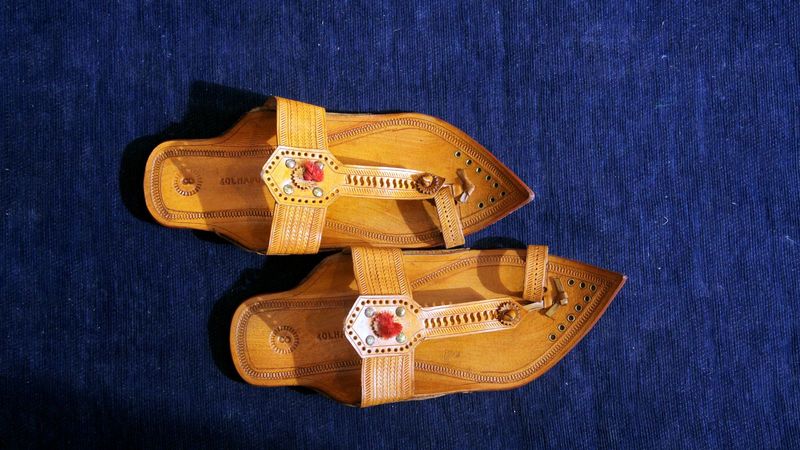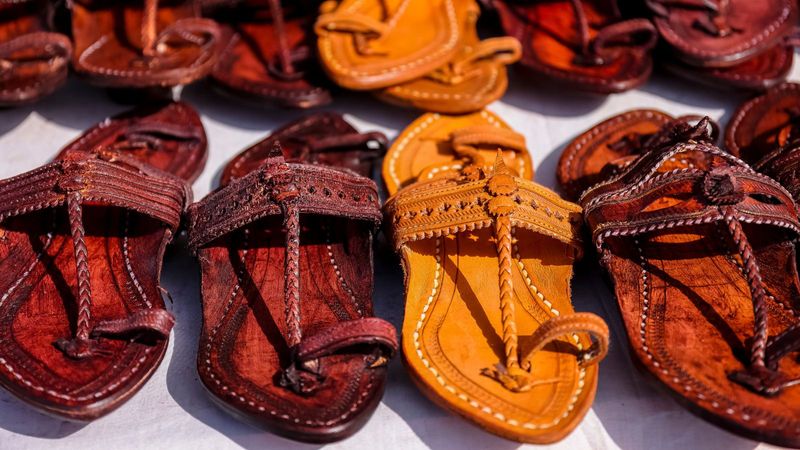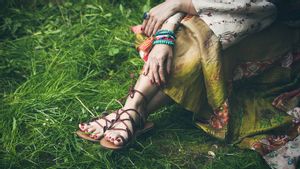Unless you’ve been living under a rock, we’re sure you heard the commotion over the Scandinavian scarves earlier this year. Before that died down completely, Kolhapurigate is here. Confused?
Over the weekend, the fashion brand Prada showcased its Spring Summer 2026 Men’s collection, which quickly caught the netizens’ attention. Styled with what seemed an athleisure-inspired collection were the humble Kolhapuri sandals. Celebrity stylist Anaita Shroff Adajania was one of the first to share details, calling them Prada Kolhapuri chappals, and soon enough, it caught the eye of the digital creator and fashion critic, Diet Sabya, who quite aptly named it Kolhapuri-gate.
In the past few months, Indian style and fashion have gone global, and not in the right way. While Scandinavian scarves rightfully got called out by both the South Asian as well as native Scandinavian creators on the internet, many like Oh Polly aping a saree and calling it a drape dress, or lehengas being renamed as embellished bohemian skirts in thrift shops have gone relatively unnoticed by South Asians. In what could simply be called colonial couture, many Western fashion brands and creators are seen stealing from indigenous cultures and making massive profits, all while deleting the ethnic roots and the meaning behind the crafts.
History of Kolhapuris

Originating in the Kolhapur district of Maharashtra, Kolhapuri chappals date back to the 12th and 13th centuries, when the Deccan's royalty, including King Bijjala and his advisor Basavanna, encouraged indigenous leather manufacturing customs and assisted in the establishment of communal tanning hubs. These elegant, open-toed, T-strap sandals (also referred to as Kachkadi, Bakkalnali, or Pukri in older styles) are more than simply shoes; they are a piece of wearable history. Under Shahu I of Kolhapur, who promoted production by establishing tanning centres, their fame skyrocketed in the 18th century. Additionally, they were granted a Geographical Indication (GI) tag in 2019, which ensures that authentic Kolhapuris must be produced in certain districts throughout Karnataka and Maharashtra.
What makes a pair come to life, then? It begins with sturdy, vegetable-tanned leather (goat, cow, or buffalo hide) that has been hand-grazed, soaked, and shaved until it is pliable and long-lasting. Expert craftspeople cut leather for uppers and soles using traditional designs. After being hammered and stamped for durability, the sole's layers are carefully hand-stitched (no nails or machines, only around 125 threads per pair) and attached using local adhesives. Then comes the enchantment of decoration: toe loops, braided straps (side patti), and occasionally metal, pearls, or zari accents. To maintain the texture and that hand-finished charm, they are then rinsed in curd or ghee, steeped in mustard oil, dried in the sun, and polished in warm hues, natural tans through reddish tones.

This incredible process can take days, or even up to six weeks for more complex designs, and the end product is shoes that mould to your feet and last decades with proper care (don't get them wet, though!). Kolhapuris are eco-friendly, hypoallergenic, rustic-chic heirlooms that echo centuries of community and handcrafted spirit, yet they are more than just functional items. Every stitch, curve, and fade reveals a tale of tenacity and lineage, giving us the chance to intentionally walk while paying tribute to the love, effort, and legacy that go into each sandal-stride.
The only good thing to come of this Kolhapuri-gate, however, is the exposure the craft will get; however, what is it at the cost of credit remains debatable.
While the devil figures out how it has ended up sliding its feet in Prada, erm, Kolhapuris, here are three shoe brands that make authentic footwear, with due process, and making sure the artisans get their share of credit.
Vaarsa
The brand makes men’s and women’s Kolhapuris, and is determined to bring the GI-tagged craft to an international stage. They also ship internationally to select countries. Vaarsa's founder and creative director is Sachin Shinde. He is a member of the GI region's artisan family. The technique of creating these handcrafted Kolhapuri Chappal has been passed down from his ancestors' generation to generation for many decades, and the brand is only taking it a notch higher.
Vhaan
While Bhushan Kamble, the force behind Vhaan, was born and educated in Mumbai, his brand of Kolhapuris has represented the artisans on countless platforms. Apart from the classic men’s and women’s sandals, they also do ‘hatke’ Kolhapuris, which let you customise the design. Oh and did we tell you that the brand also offers you repairs for your older Kolhapuris? Sustainability champs!
Korakari
Korakari is a Kolhapur, Maharashtra-based startup that designs and produces premium leather goods using the long-standing Kolhapuri custom. The company offers Kolhapuri leather chappals, including the traditional Kapsi, Paper Kapsi, Kurundvadi, Shahu, high heel, platform heel, pointed, and T-shaped chappals.




